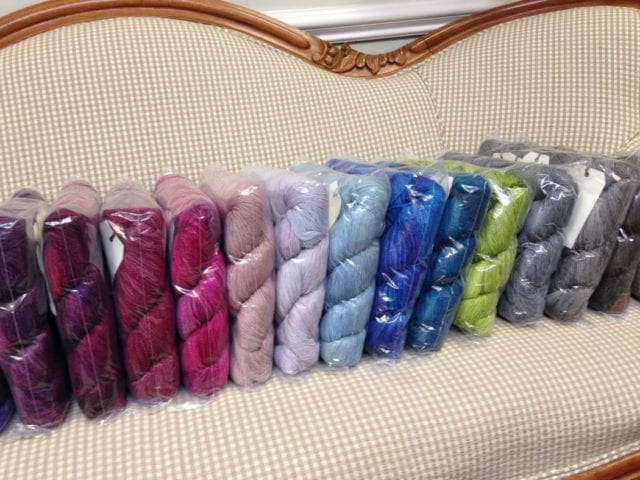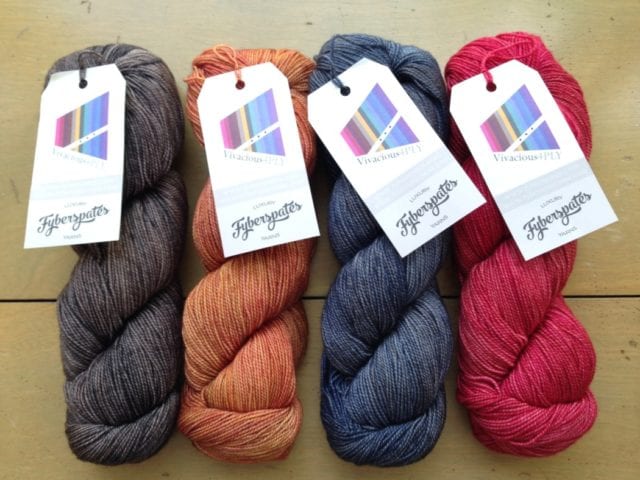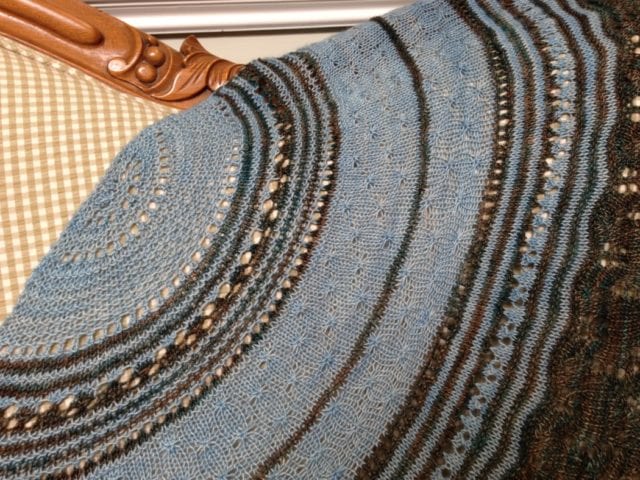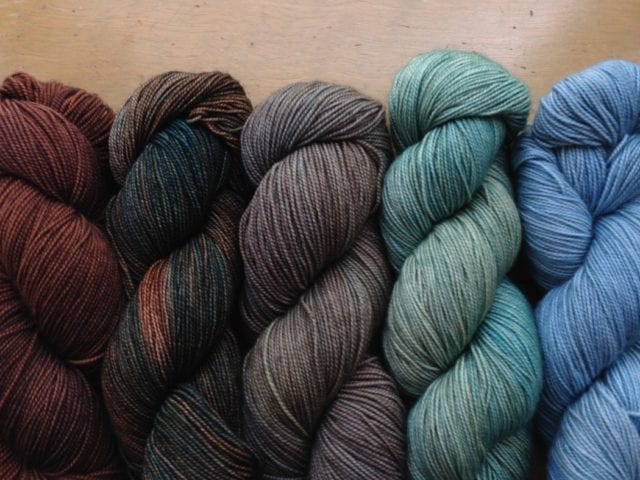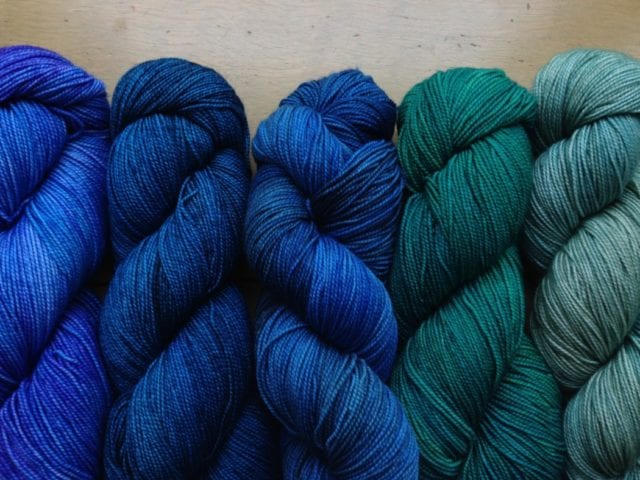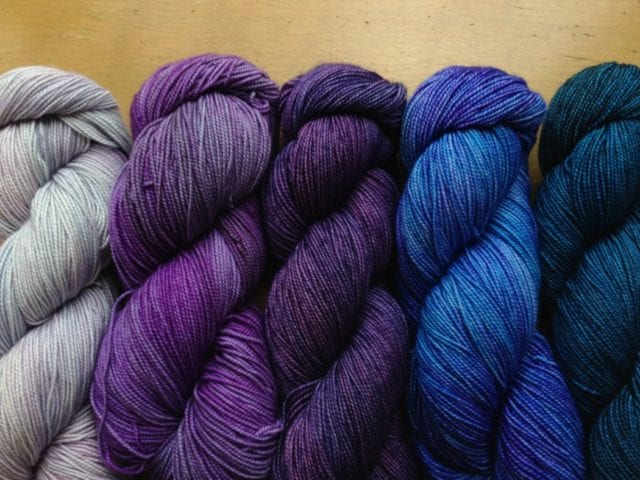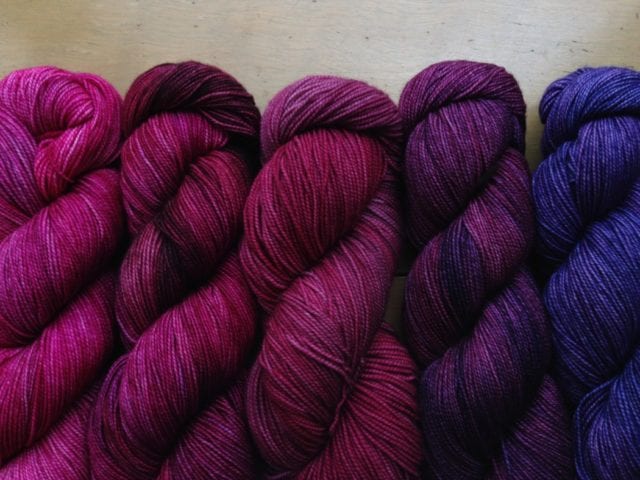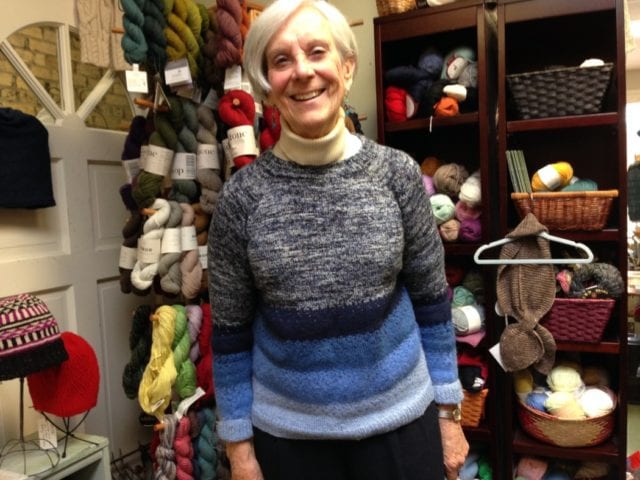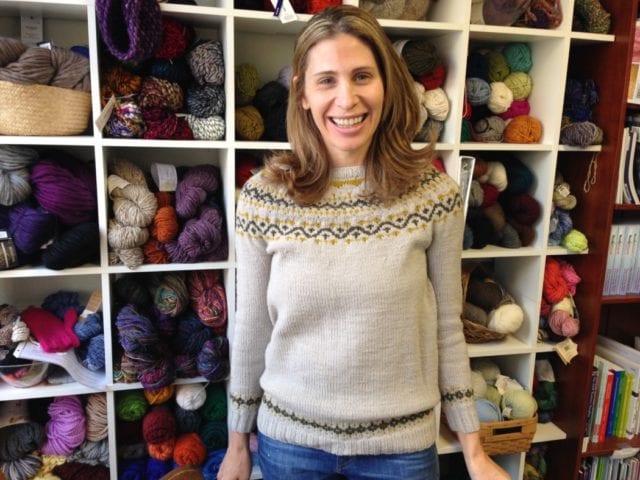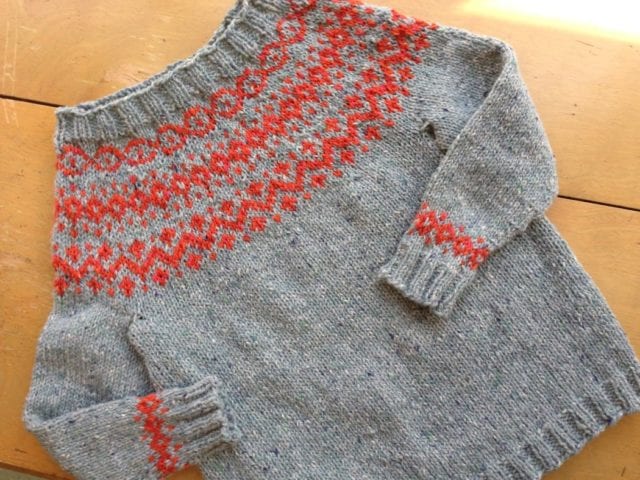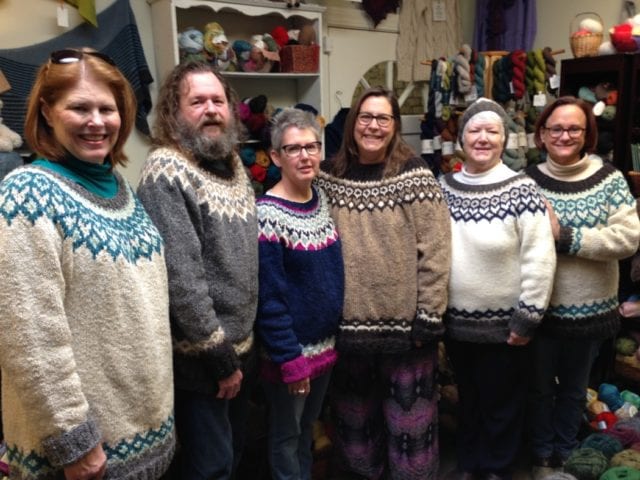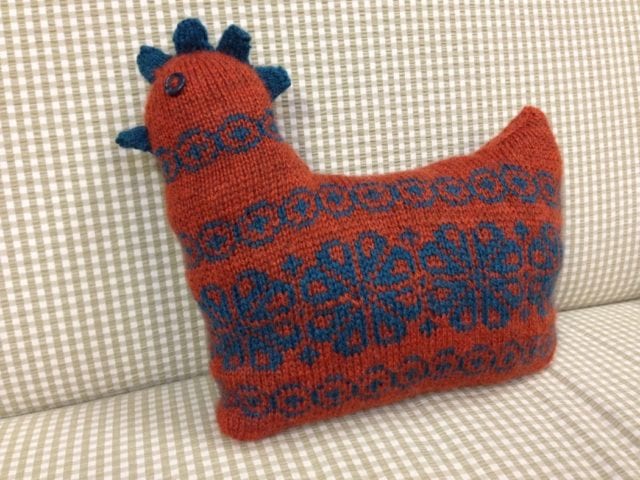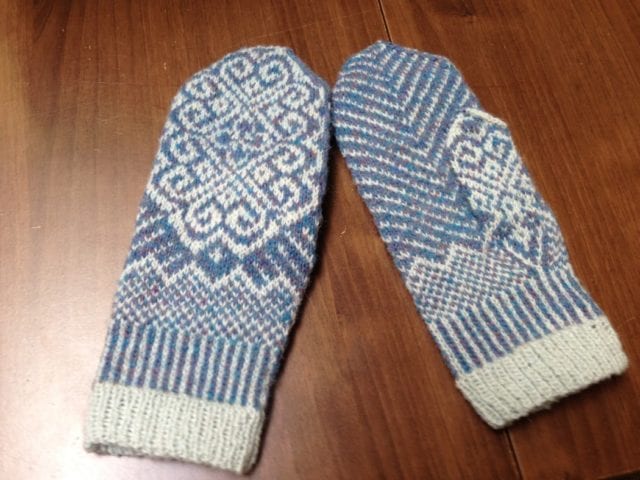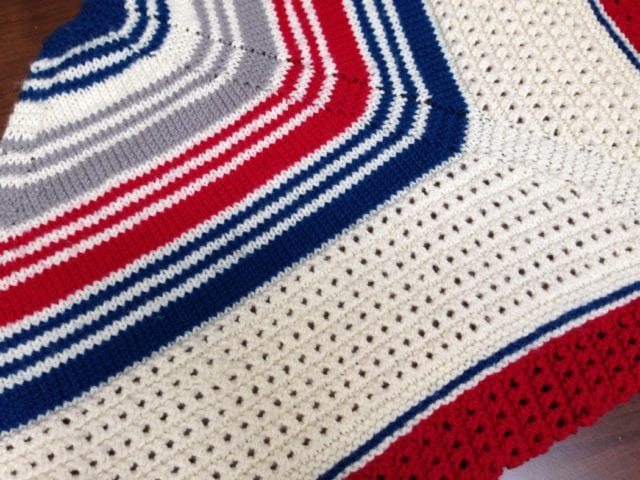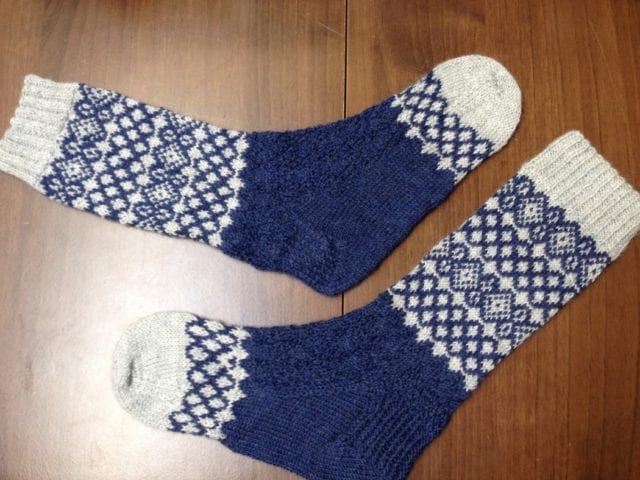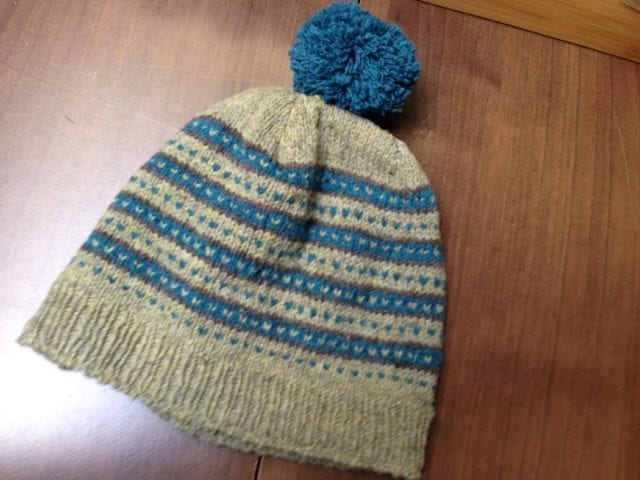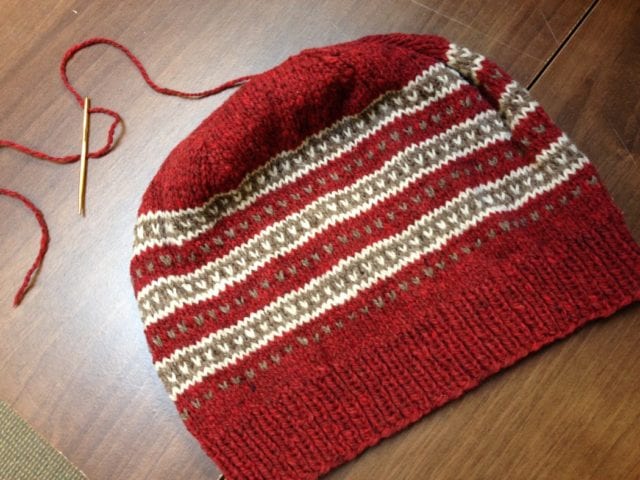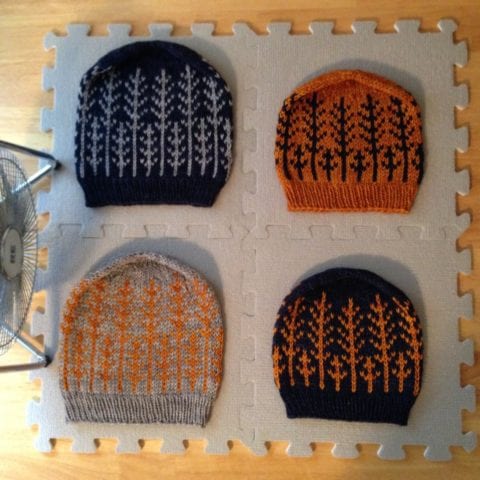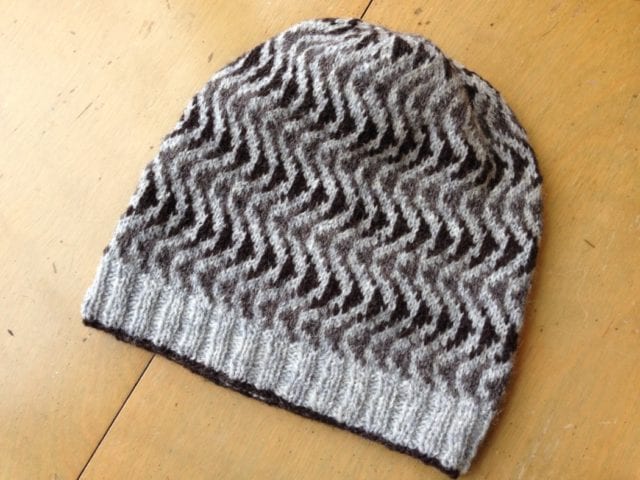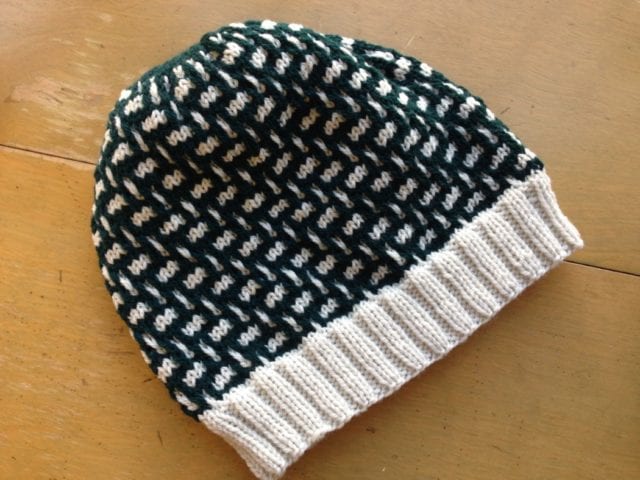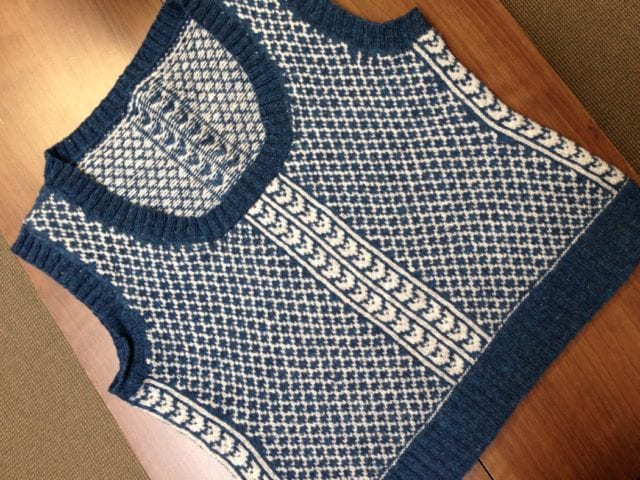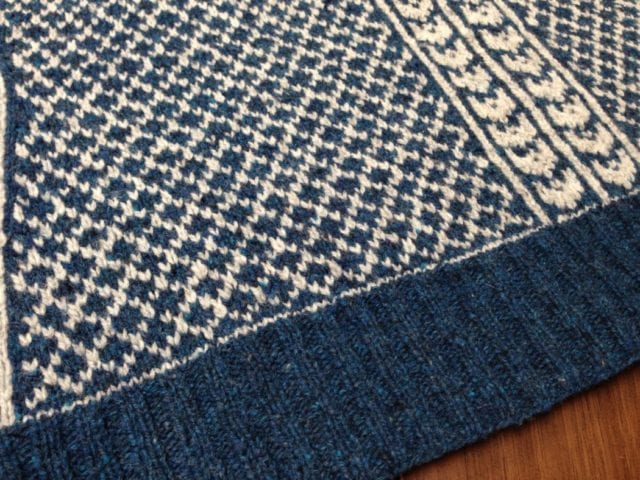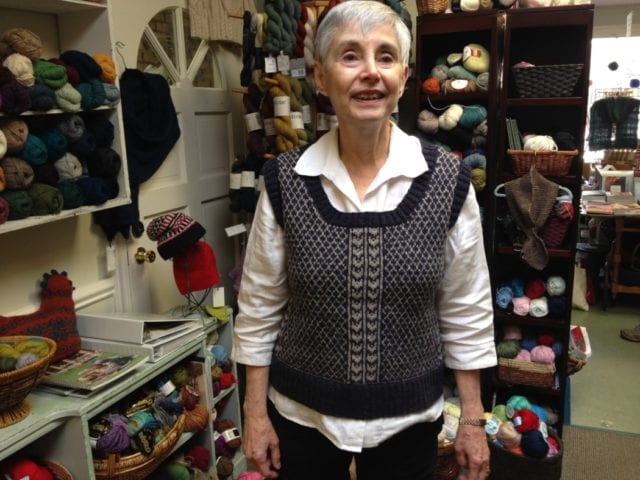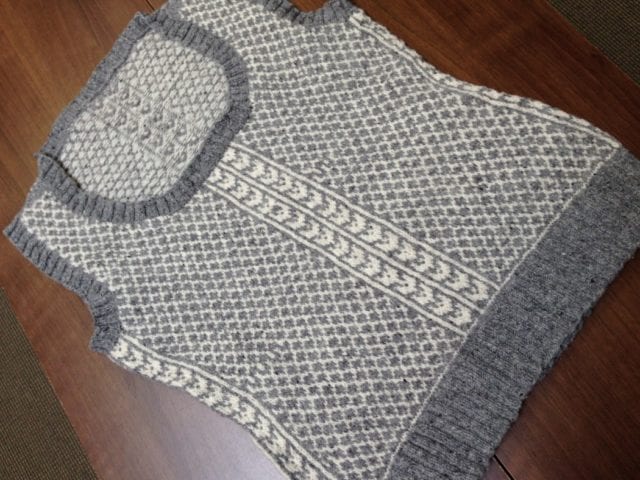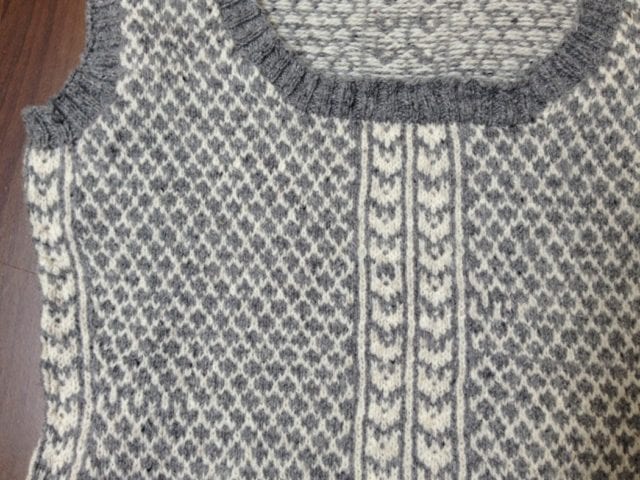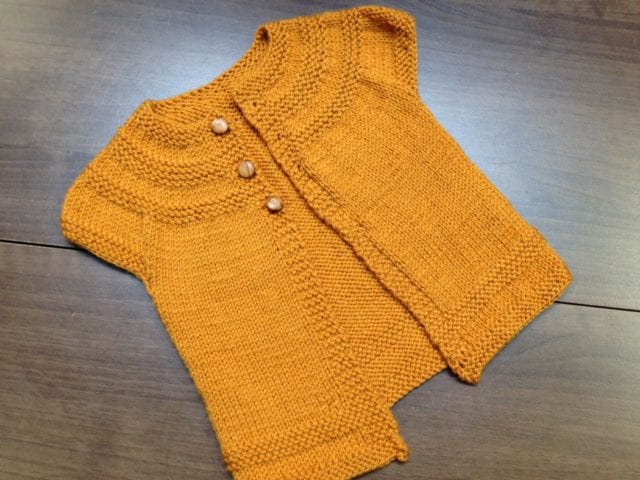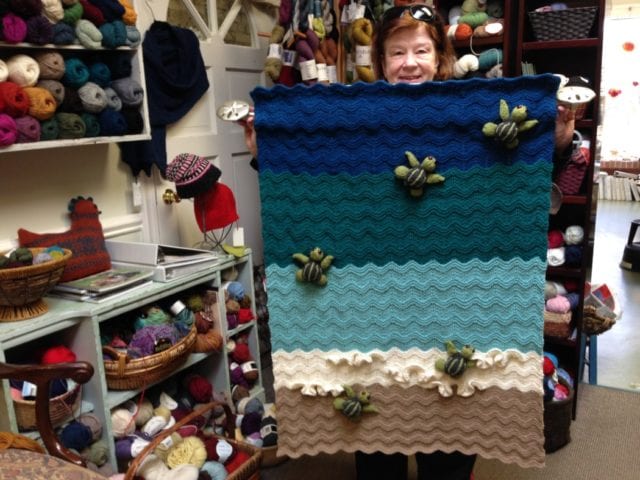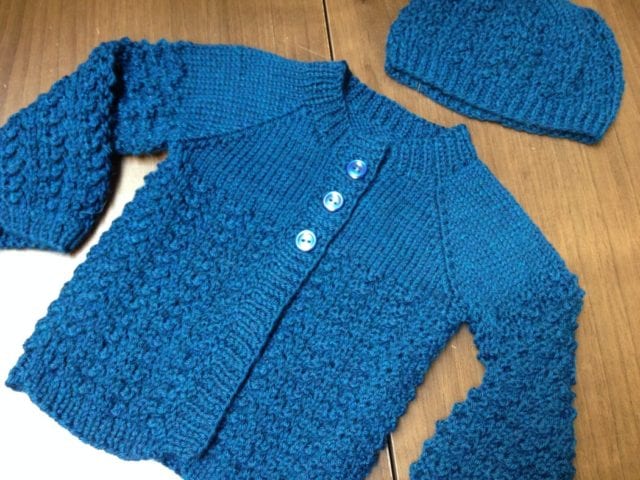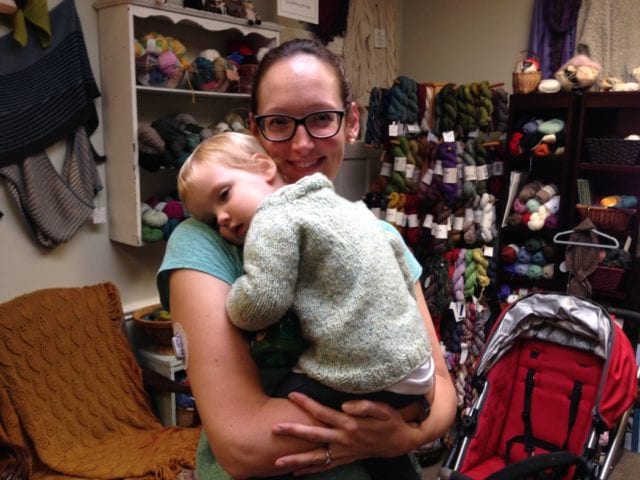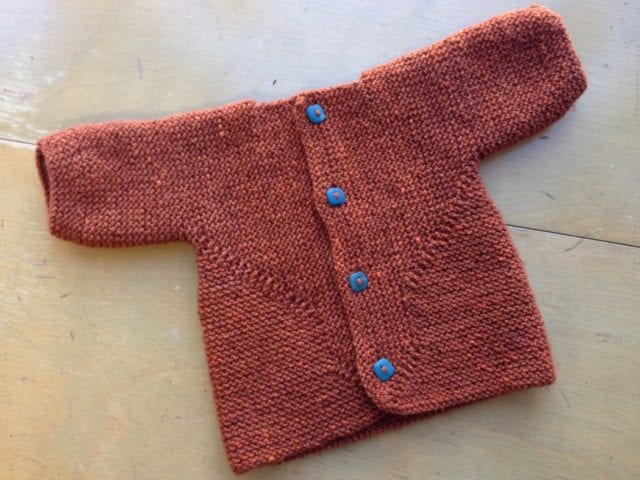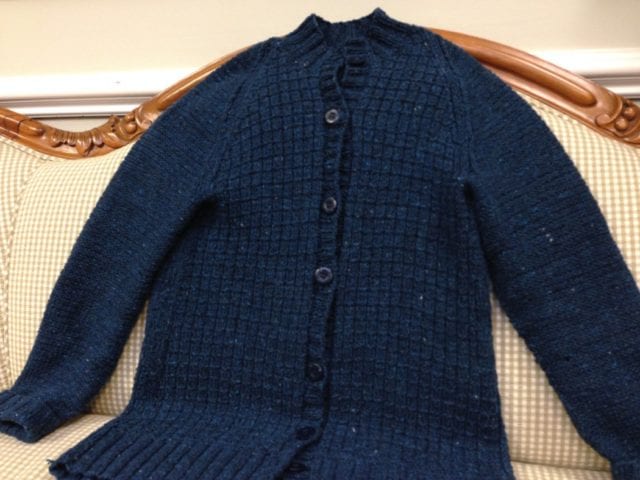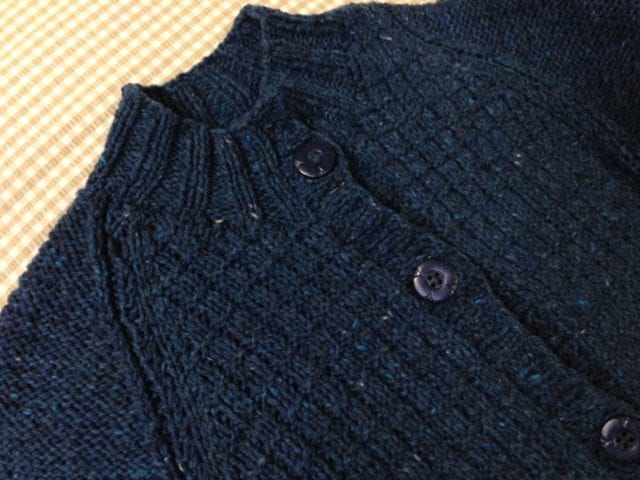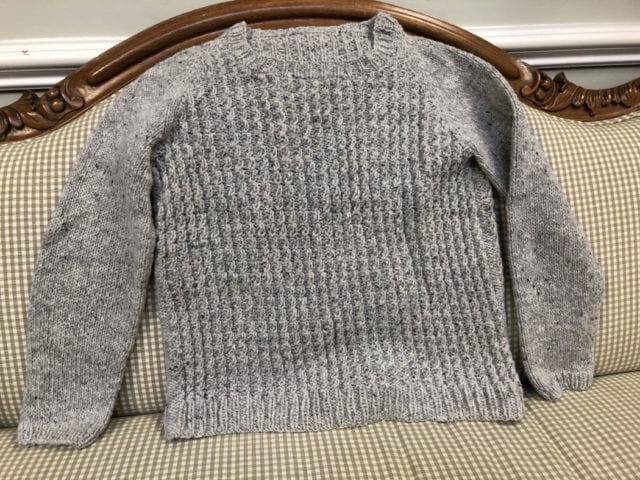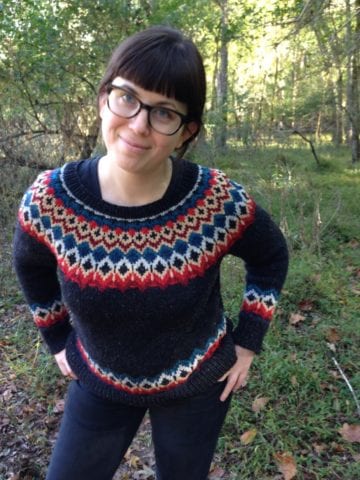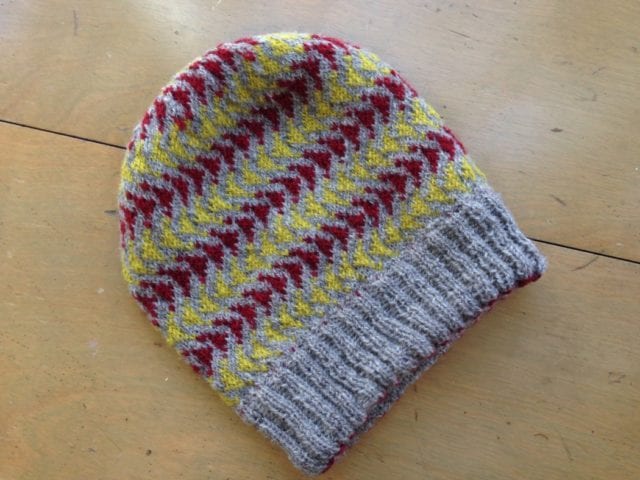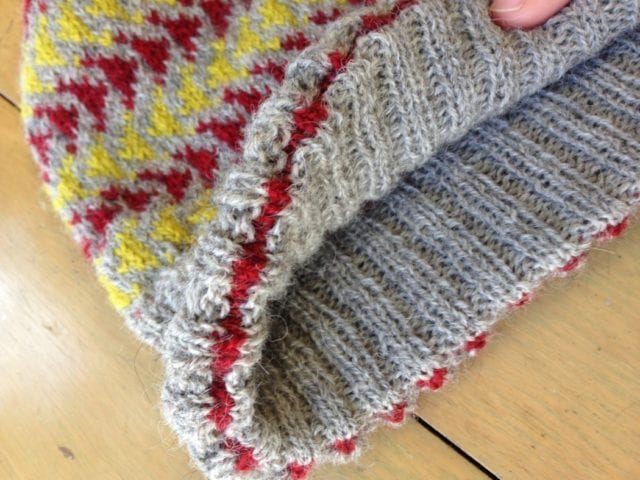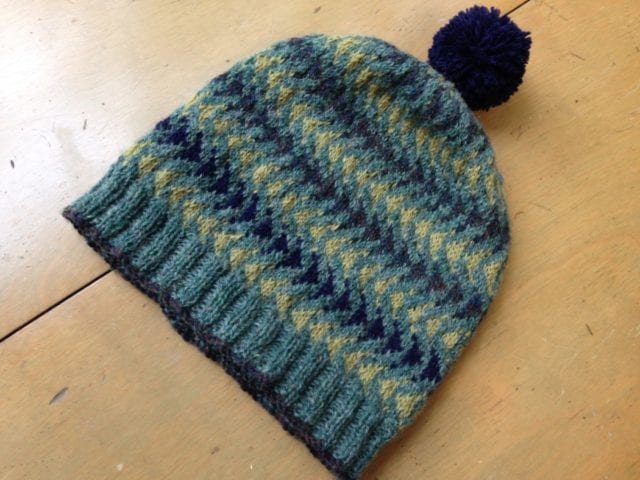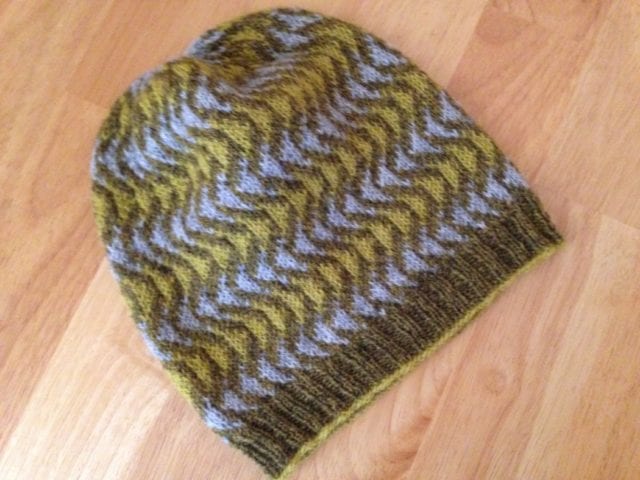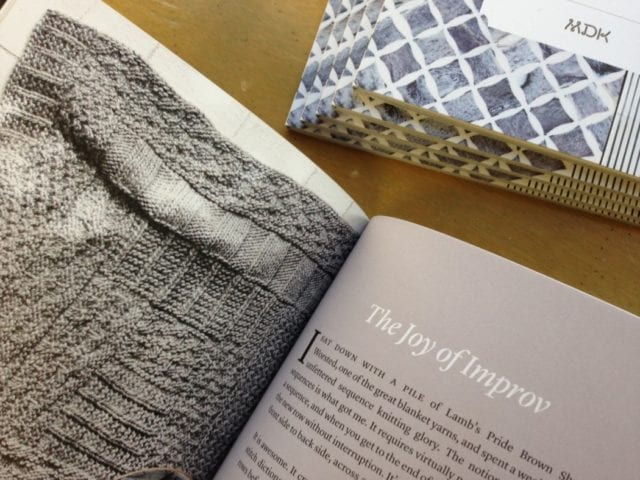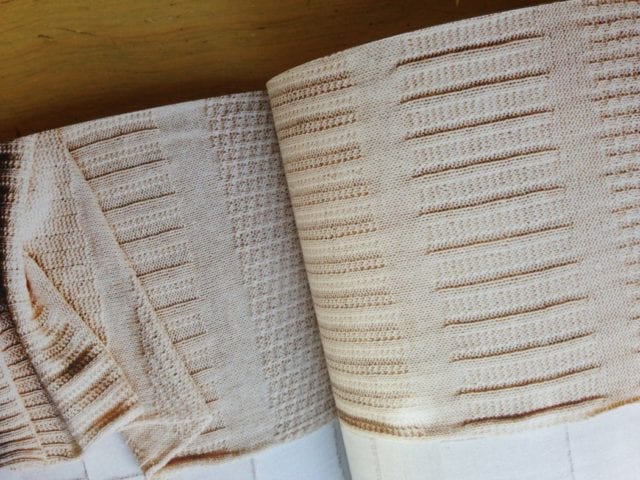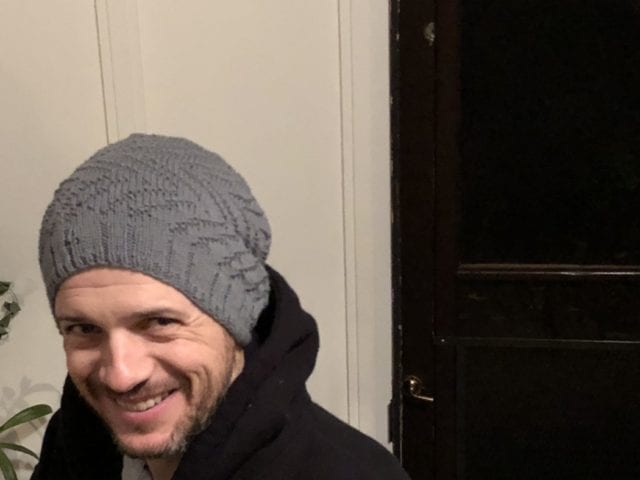Amy has now taught her “Hitofude” cardigan class three times at our shop, and has just begun a fourth. With an unusual construction and a repetitive lace motif, Hiroko Fukatsu’s “Hitofude” is a gracefully draped garment that many knitters have been drawn to. So far, we’ve seen five finished garments come out of these classes, and I can’t wait to share them with you!
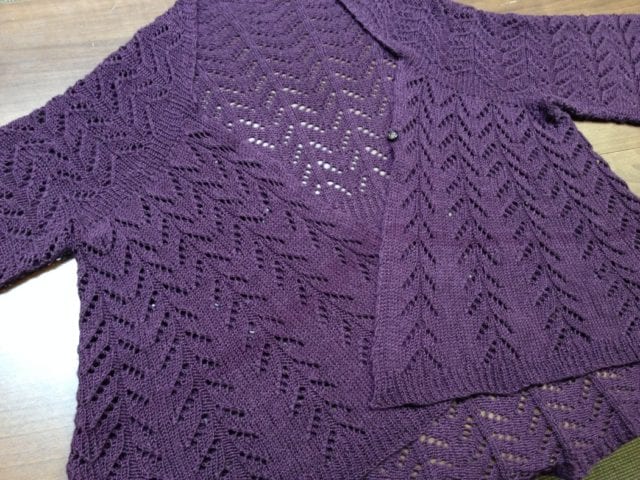
Above is Amy’s own “Hitofude,” knit with Shibui Staccato. The combination of silk and superwash merino means drape and shine, both of which bring elegance to this piece.
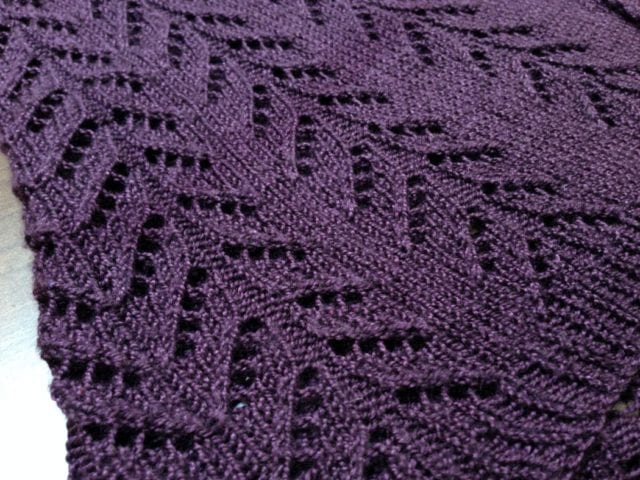
Many of Amy’s students chose Staccato for their “Hitofude” cardigans; here’s Jane in hers.

Jane lengthened the sleeves and the body of the sweater for exactly the fit she wanted, and it came out just right.
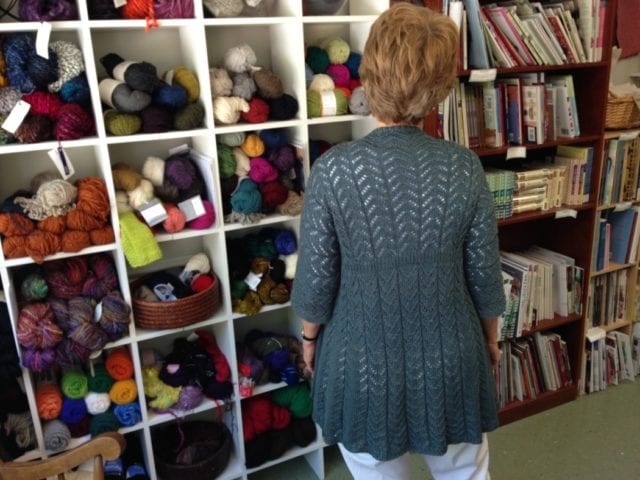
Margie made similar modifications, but used Fibre Company Cumbria Fingering, a wool/mohair blend with more structure and less drape than Staccato. It makes a more substantial garment appropriate for fall and winter, and Margie is happy with the results.
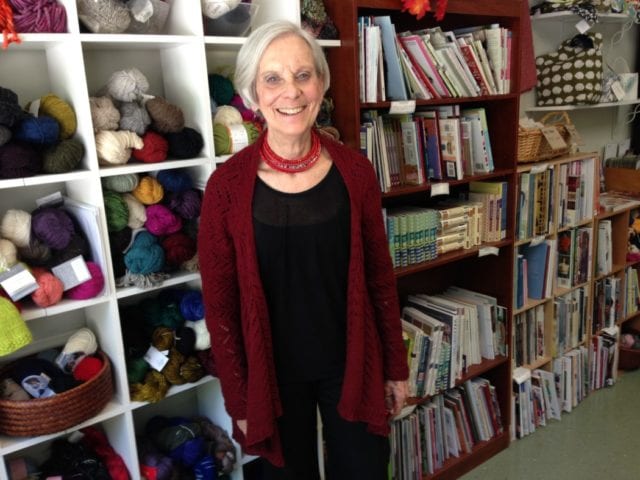
Pam used Madeline Tosh Merino Light for her sweater, which looks springy and playful in a tonally variegated chartreuse. It’s not a yarn we carry at the shop, but Malabrigo Mechita is similar – a hand-dyed, single ply, superwash merino.
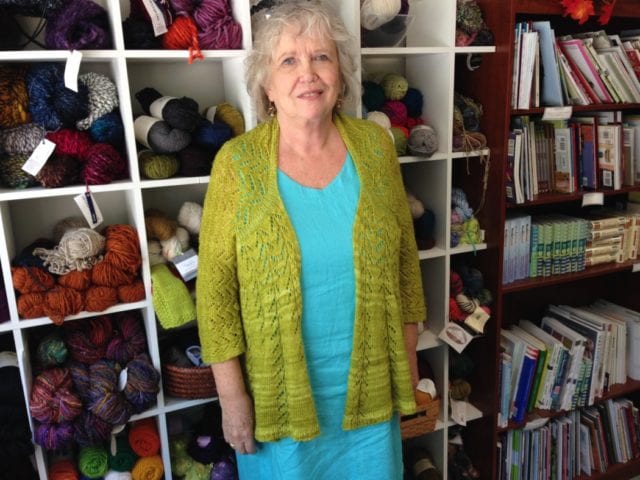
This group photo shows Linda, second from the left, in her “Hitofude,” knit with Shibui Staccato. She kept the original sleeve and body length of the pattern for a slightly cropped silhouette. It’s amazing what an impact these slight differences can have from one garment to the next, even with the same pattern – we love seeing knitters in self-made sweaters that reflect their preferences and show off their skills!
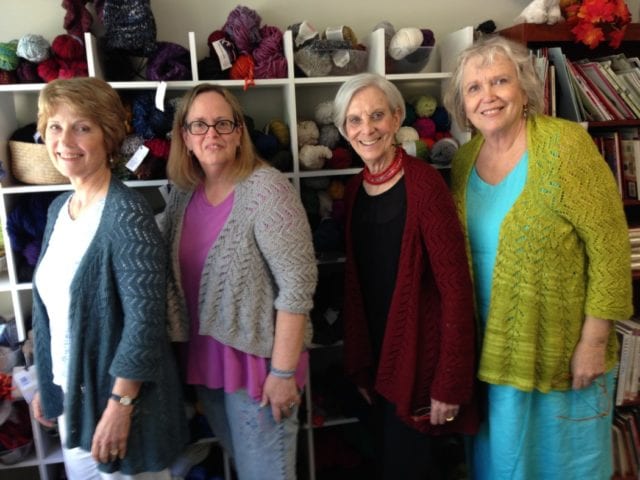
Thanks to these knitters for sharing their work with us, and especially for participating in classes here at the shop. We feel so lucky to have such talented teachers on our team, and students who are excited to learn more about their craft. I’m so looking forward to seeing more “Hitofude” cardigans as they’re completed!



